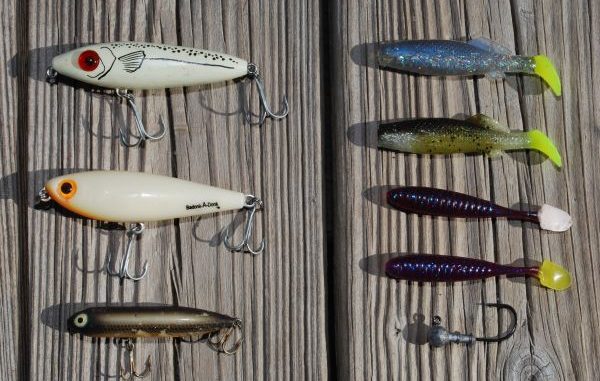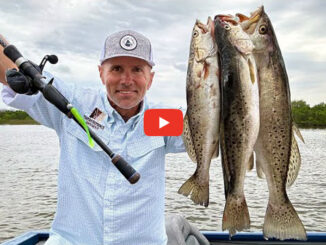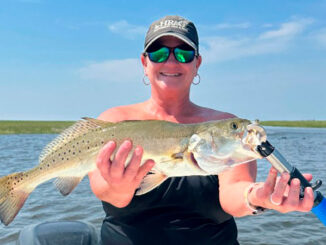
Nash Roberts IV is a big fan of artificial lures, only turning to live bait during the hot days of June, July and August.
It would be easy, but wrong, to guess that such an artificial bait specialist would stock a wide variety of lures, especially plastics.
Roberts’ soft plastics essentially fall into two categories: dark and light. Light baits are opening night and frog’s breath colors. Dark baits are purple and purple and purple.
“Purple baits are best on cloudy days, for some reason,” he says. They are also really good in trout-green water.”
Most of the time he uses purple with a chartreuse tail or purple with a white tail.
“Purple-and-white is the bait that I started out with, so there may some sentimental value in it,” Roberts admitted.
Clear days and clear water call for more subtle colors. That is when he uses frog’s breath or opening night. He admits that they are interchangeable.
“I don’t know if there is much difference where I fish, although frog‘s breath works fairly well in dingy water,” he explained. “In muddy water, my go-to baits are the purple ones.
“So many people want to throw off-the-wall baits. People are too concerned with color in plastics. Stick with a few. I really believe in my big three: opening night, frog’s breath and purple.”
As for brand and body style, he uses Deadly Dudley Terror Tails or Bay Choveys interchangeably.
Roberts’ other lures are limited to topwater plugs, and they are few in number and color. Favorites are Mirr0lure She Dogs, Bomber Badonk-A-Donks and Zara Spooks.
Again his color selection is narrow. Plain old bone is the favorite by a wide margin.
“In topwaters,” he counseled, “I don’t find that color on the top of a lure makes a big difference. I pretty much stick to bone or chrome color mixtures.”
Live bait selection and rigging during the summer’s dog days is also kept simple. He uses two kinds: shrimp that he purchases and pogies that he catches in a cast net.
No cocahoes; no croakers.
Shrimp are invariably fished under a rattling cork, with a kahle hook inserted under the horn on top of the head. Pogies are hooked through the front of the eye sockets and fished free-lined with a split shot crimped on the line ahead of the hook.
“Keep your lure selection simple,” he said.


